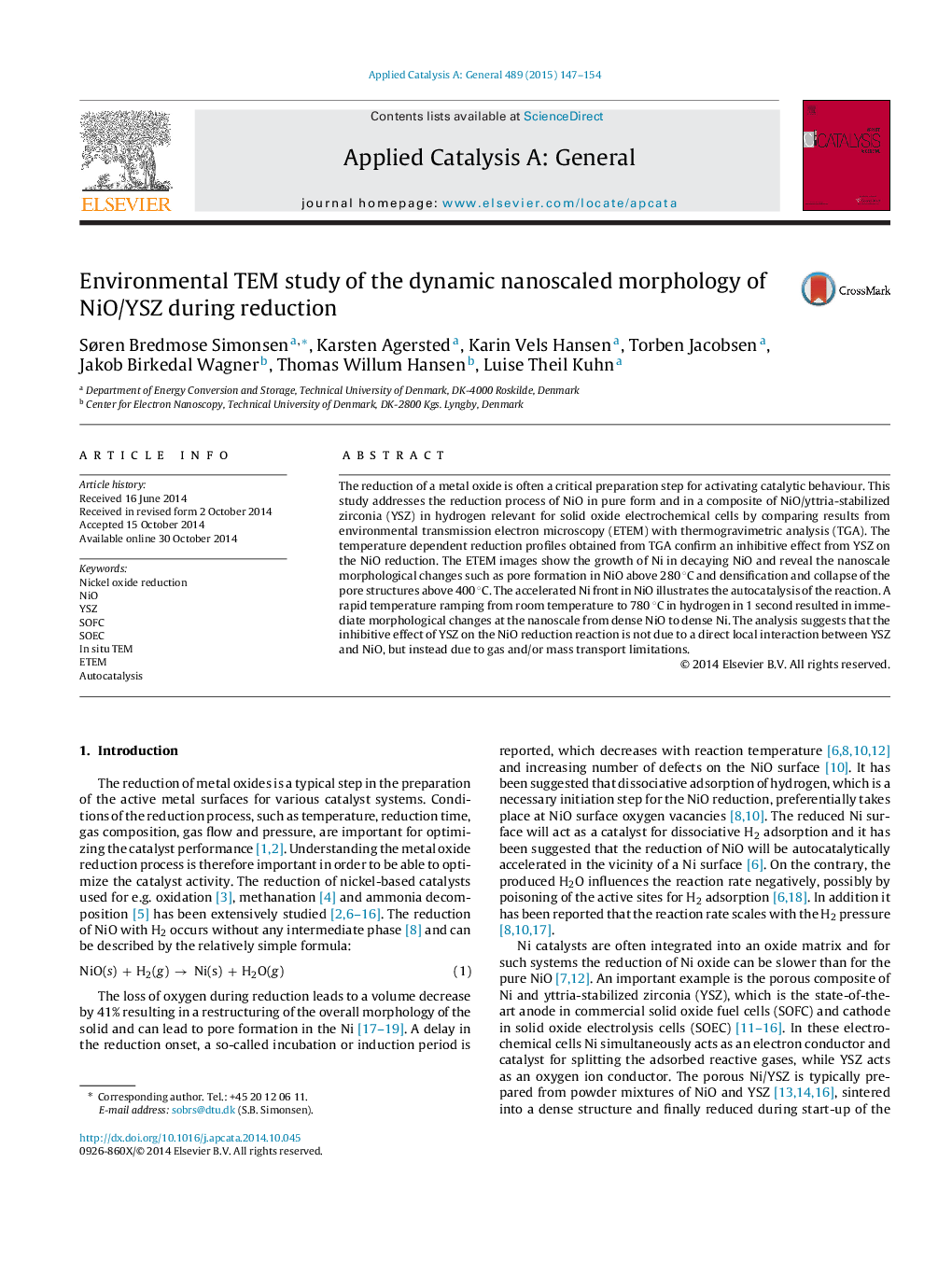| Article ID | Journal | Published Year | Pages | File Type |
|---|---|---|---|---|
| 39404 | Applied Catalysis A: General | 2015 | 8 Pages |
•We follow NiO/YSZ reduction in H2 at the nanoscale by using environmental TEM.•We examine the influence of YSZ on the NiO reduction.•The YSZ does not inhibit the reduction at the nanoscale.•Ni pore formation and collapse is monitored as a function of temperature.•No pore formation is observed when ramping fast from RT to 800 °C in H2.
The reduction of a metal oxide is often a critical preparation step for activating catalytic behaviour. This study addresses the reduction process of NiO in pure form and in a composite of NiO/yttria-stabilized zirconia (YSZ) in hydrogen relevant for solid oxide electrochemical cells by comparing results from environmental transmission electron microscopy (ETEM) with thermogravimetric analysis (TGA). The temperature dependent reduction profiles obtained from TGA confirm an inhibitive effect from YSZ on the NiO reduction. The ETEM images show the growth of Ni in decaying NiO and reveal the nanoscale morphological changes such as pore formation in NiO above 280 °C and densification and collapse of the pore structures above 400 °C. The accelerated Ni front in NiO illustrates the autocatalysis of the reaction. A rapid temperature ramping from room temperature to 780 °C in hydrogen in 1 second resulted in immediate morphological changes at the nanoscale from dense NiO to dense Ni. The analysis suggests that the inhibitive effect of YSZ on the NiO reduction reaction is not due to a direct local interaction between YSZ and NiO, but instead due to gas and/or mass transport limitations.
Graphical abstractFigure optionsDownload full-size imageDownload high-quality image (316 K)Download as PowerPoint slide
